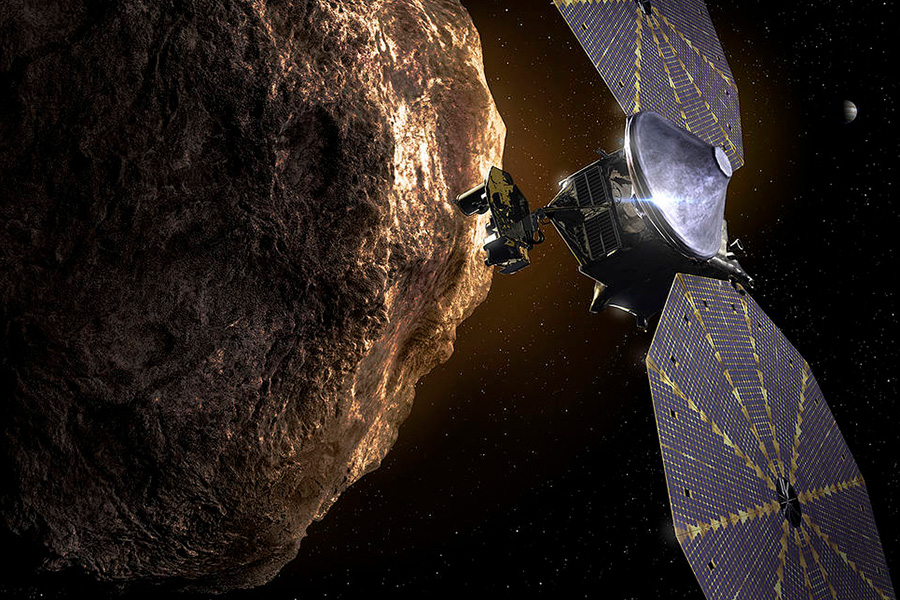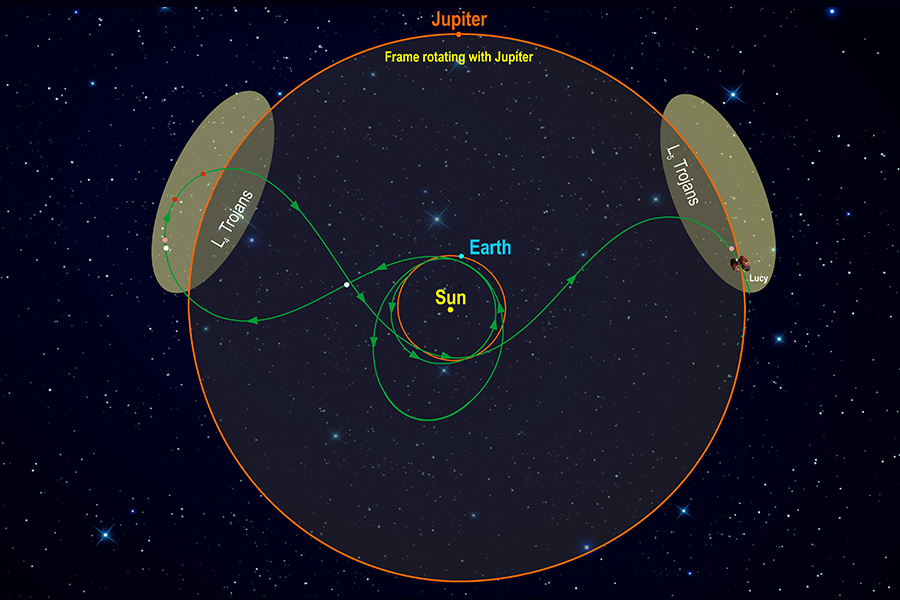Rocket Launch: NET October 16, 2021 5:34 AM EDT | ULA Atlas V Lucy Mission
Oct 16, 2021 05:34 AM Cape Canaveral Space Force Station SLC-41 ULA Atlas V Lucy MissionMISSION
For the first time, NASA will be exploring the Trojan asteroids. These asteroids orbit the Sun in two groups along Jupiter’s orbit path and are the leftover building blocks of our solar system’s outer planets. Studying these asteroids will provide a unique look into the planetary origins of our solar system. Lucy will launch from Cape Canaveral and uses boosts from Earth’s gravity to undergo a 12-year journey to eight different asteroids. This path will include a Main Belt asteroid and seven Trojan asteroids. No other mission in history has been launched to as many different destination's independent orbits around our sub. Learn more about the Lucy Mission on the NASA website.
LAUNCH VIEWING
Due to the launch window occurring substantially outside visitor complex hours of operation, launch viewing for Lucy is unavailable. If you are visiting October 16, be on the lookout for NASA activities in the Atlantis West Pavilion to learn more about this launch. More details to be announced soon.
You are also invited to be a Lucy virtual guest of NASA. Lucy virtual guests receive up-to-date resources, interaction opportunities and a virtual guest passport stamp following the launch. Learn more here.
HELPFUL LINKS:
- Follow us on Twitter and Facebook for launch updates
- Read more about ULA Atlas V
Availability of upcoming viewing opportunities is dependent upon the scheduled launch time and is subject to NASA and U.S. Space Force approval. Launch date, time, and viewing opportunities are subject to change. Launches can be affected by technical and mechanical issues as well as range operations and weather, either in advance or at the last minute.

Rocket Launch: NET October 16, 2021 5:34 AM EDT | ULA Atlas V Lucy Mission
LUCY'S PATH

Learn more about the mission and path of the Lucy spacecraft.
Credits: Southwest Research Institute




